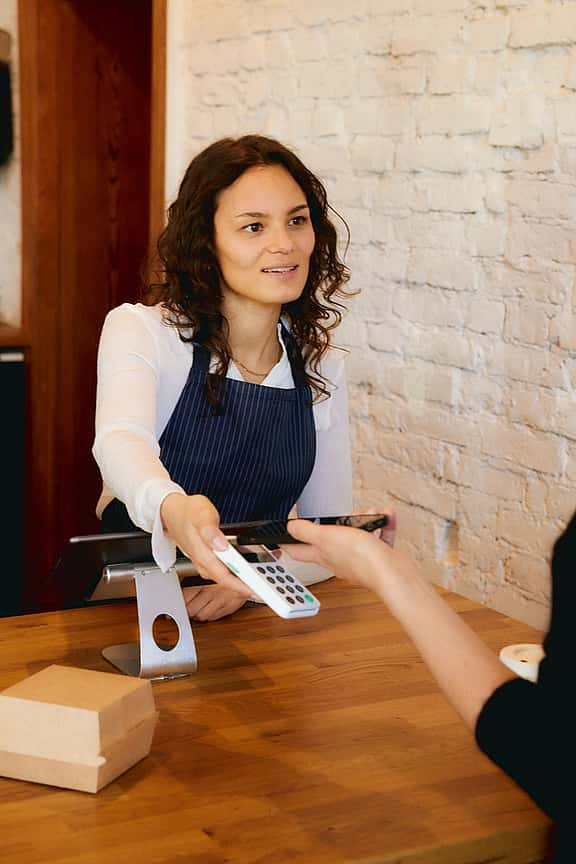In fact, the Reserve Bank of Australia states that 63% of payments are made with a card and that 81% of people have automatic payment arrangements.
If you’re hesitating about choosing this option, or have concerns, we’ve compiled a list of pros and cons, for you to decide if this option is a good fit for you or your business.
Wave vs. Wallet
Before we get into the technical stuff, let’s break down the payments a bit further. Here are the two modes of contactless payment.
Wave
The wave refers to a symbol on your credit card, debit card or other contactless payment device. Formed as four curved lines in a row, its shape resembles a megaphone for easy identification.
Wallet
Unlike the direct use of credit or debit cards, mobile wallets account for online contactless payments. Add your card details to your mobile wallet for simpler transactions going forward. Then it’s just a matter of making transactions from your preferred device using apps like Apple Pay, Google Pay or PayPal.
Now that you know the basic terms, let’s move onto the pros and cons of automatic and contactless payments, starting with positives.
Pros vs Cons
It's Easy
As a rule of thumb, contactless payments are quick and easy. Faster processing times mean shorter queues and happier customers. There’s also no need to remember your PIN in most purchase, simply tap and go.
Device Flexibility
Contactless payments mean waving cash virtually goodbye. Having the flexibility to pay with a card or smartphone lets you decide what’s most convenient. Just make sure your smartphone is NFC-enabled to avoid the awkward ‘standing at the checkout swearing this normally works’ moment.
Play It Safe
Chip technology in tap-to-pay options is safer than many other payment options. Contactless payments feature data encryption for more secure transactions and deterred hacking.
Better Hygiene
In light of COVID-19, limiting contact between customers and employees means more hygienic transactions. There’s no guarantee of perfect conditions, of course, though the elimination of cash handling and hand-to-hand contact certainly helps.
No Added Cost
From a business perspective, contactless payment methods typically pose no added fees. Offering additional payment options for an improved customer experience is relatively painless.
But as with all new innovation, sometimes there are downsides to new technology.
Transaction Max
For all their convenience, the spending cap on contactless payments comes as a bit of a downer. Perhaps these limits will change as the transaction method expands, but for now, contactless is best suited to small purchases.
Spotty Access
This form of payment may be part of our financial landscape, though in some respects, it’s still a thing of the future. Not all retailers have embraced contactless payments, particularly among smaller outlets, and even with those who have can experience power outages, connection issues or other unexpected events that can cause them to lose connection to their banks.
National Availability
Much to the chagrin of vacationers everywhere, contactless payments are a no-go internationally. Check with your individual provider for more details, though generally speaking, contactless payments are a sticky wicket abroad.
Fraud Loophole
Data encryption renders this form of payment safe overall. That being said, a stolen card or device could very well be problematic. Keep your payment information available to notify your bank or service provider of a missing card or device ASAP.
Ultimately contactless payments pave the way for safer transactions moving forward. Knowing what you’re in for helps smooth the transition, and if you're ready to take the plunge and get a point of sale system, as one of the leading I.T financial service providers grenke offers fast and flexible financial solutions tailored to your unique business needs, from small businesses to large enterprises.






